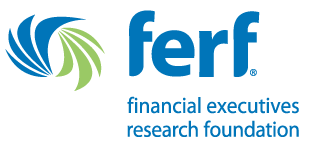Accounting
Whitepaper Examines Best Practices for Companies Transitioning from Emerging Growth Status
Financial Executives Research Foundation and Donnelley Financial Solutions, Inc. today released a white paper examining best practices for companies that are maturing out of Emerging Growth Company (EGC) status per the JOBS (Jumpstart Our Business ...
Aug. 30, 2017

Financial Executives Research Foundation and Donnelley Financial Solutions, Inc. today released a white paper examining best practices for companies that are maturing out of Emerging Growth Company (EGC) status per the JOBS (Jumpstart Our Business Startups) Act of 2012.
The paper, entitled “Growing Past Emerging Growth: Five Years after the JOBS Act,” discusses the differences in disclosure requirements for these companies and ways to overcome complications and challenges to maturing their approach to governance, disclosure, communications, and regulatory compliance.
Since the peak of the IPO market in 1996 to 2016, the number of public companies being traded in the United States declined 50 percent, from 7,322 to just 3,671, even with the advent of the JOBS Act. With fewer public companies for investors and regulators to assess, all public companies—including EGCs—should be prepared for more rigorous scrutiny from a range of market participants: regulators, proxy advisors, rating agencies and shareholders — including large pension funds and other institutional investors.
With the five-year anniversary of the JOBS Act comes the deadline for the first companies that became public under the JOBS Act’s EGC status to transition to full public company status. This transition brings with it a corresponding increase in compliance and reporting obligations. The weight of these obligations falls most heavily on the Finance and Compliance functions.
“As we approach the five-year milestone of the JOBS Act, which encouraged younger companies to join the public markets, senior financial executives will have a pivotal role in guiding their organizations through a smooth transition from EGC status to full reporting and disclosure,” said Andrej Suskavcevic, CAE, President and CEO of Financial Executives International and Financial Executives Research Foundation. “This report will allow our members and other senior executives to think critically about how to use this transition as an opportunity to implement policies and practices that will benefit their organizations’ governance and growth over the long-term.”
Recent changes to the JOBS Act that became effective on April 12, 2017, change the threshold for qualifying as an EGC, amendments for filing and disclosure requirements, and methods for requesting EGC treatment. These changes, as well as the ever-evolving compliance environment, have made technology tools more critical than ever.
“Today’s financial technology enables companies to effectively streamline the reporting process and manage regulatory changes,” said Craig Clay, President, Global Capital Markets at Donnelley Financial Solutions. “Despite the expansion of Sarbanes Oxley and other requirements, technology can reduce the time to prepare financial statements, enhance the quality of disclosures and help better communicate the value of a company to its investors.”
The report breaks down the requirements of full public company status and provides recommendations on achieving compliance with each requirement and helps executives to understand:
– The various milestones that trigger a transition to full reporting and disclosure requirements
– Opportunities for EGCs to establish best practices in financial communications and shareholder relations,
– Opportunities for EGCs to build goodwill with shareholders, regulators, analysts and other stakeholders
– Disclosure requirements for newly transitioned companies
– Recent amendments to the JOBS Act that impact qualification thresholds for EGCs
– Benefits of requesting EGC status for public companies or those that intend to list on public exchanges
Recommendations for Transitioning Companies
The report details examples of sound transition planning for companies nearing full public company status, emphasizing:
– The need to plan early
– Benefits of a gradual transition for companies, looking at one, or a small number of disclosures or governance practices at a time, i.e., executive compensation CD&A filing
– Securing appropriate resources, i.e., adjusting internal staffing and securing external advisors necessary to accommodate a public company filing status
– Tools and technology that can streamline compliance
– The appropriate role of consultants
– Guidelines to ensure maximum clarity and impact in related documents and other communications
The JOBS Act Background
The JOBS Act, signed into law on April 5, 2012, allows smaller companies to file for an initial public offering (IPO) under EGC status. These companies can use a streamlined registration process and, in their initial years as a public company, disclose less information than larger companies are required to report. Policymakers hoped that unburdening startups of costly and complicated financial reporting requirements for a limited period would translate into more public company filings and, ultimately, support increased economic growth. While there are several size and growth oriented milestones which can require a company to transition to full disclosure and reporting, the last day of the issuer’s fiscal year following the fifth anniversary of its IPO is one that will now lead to a wave of EGCs transitioning to full disclosure.
FERF’s “Growing Past Emerging Growth: Five Years after the JOBS Act” white paper is available online at https://www.financialexecutives.org/Research.aspx.
